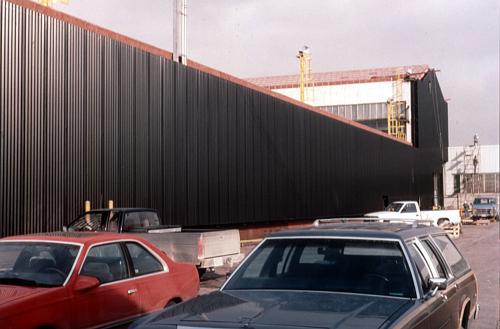Renewable Energy Technology - Solar Ventilation Air Pre-Heating
This is a follow-up article in the Renewable Energy Series, the introductory article can be found here: Renewable Energy Technology Applications - Introduction

Source:NREL
This is the first part of three parts for Series 1 and it is on Solar Ventilation Air Pre-heating.
- Solar Thermal (Solar Ventilation Air Pre-heating & Solar Water Heating) and Concentrating Power Technologies (Series 1).
- Photovoltaics and Daylighting Technologies (Series 2).
- Wind Technologies (Series 3).
- Geothermal Energy Technologies (Series 4).
- Biomass Technologies (Series 5).
- Hydro-power and Ocean Technologies (Series 6).
Solar Ventilation air pre-heating
Uses the energy of solar radiation to pre-heat the air using passive solar energy before it’s circulated through the building’s ventilation system, especially in areas where heating loads are dominant and the best combination of available sun and high heating requirements for buildings.
The technology is best applicable to large industrial facilities that require a steady supply of ventilation air such as:
- Vehicle maintenance facilities
- Aircraft hangers.
- Warehouses.
- Large crop drying facilities.
- Apartment Buildings
- Process air heating
Solar air Pre-heating system and components
Transpired solar collector
This is a wall constructed of perforated metal sheets four feet wide and in any length. The collector is perforated with tiny holes and painted a dark colour to absorb maximum solar radiation.
Mounting Brackets
The transpired collector is secured to the south-facing wall by mounting brackets that stand the transpired collector away from the wall to create a space to retain the pre-heated ventilation air. This space is referred to as a plenum.
Perimeter flashing
Proper installation of flashing is required around the perimeter of the transpired collector to keep air from going around it and bypassing the tiny holes.
Ventilation fan
The ventilation air is drawn through the holes in the collector and into the plenum by the action of a ventilation fan, which typically already exists in a building.
Ducts and Ductwork
Existing ductwork can be used to distribute hot air from the solar ventilation preheating system directly into a space heated by unit heaters or other means.
Actuated Bypass Damper
The dampers would be controlled such that when the space is calling for heat, the outside air damper would be closed and the solar ventilation preheat damper would be open. If the space does not need the heat, the outside air damper would be open and the solar ventilation preheat damper would be closed.
Operating Principle of Transpired Solar Collector
The principle of the transpired solar collector is such that the thin boundary layer of solar heated air enters in through small holes before it has a chance to mix with surrounding air.
| The bypass damper is closed (circled in red) and ventilation air is drawn in through the tiny holes of the transpired solar collector. The temperature might increase as much as -9 (15F) to -1 (30F) degrees Celcius on a sunny day .So instead of coming in at -17 Celcius (0F) the air is coming in at -1 (30F) degrees Celsius, and that saves a lot on the fuel required to heat the ventilation air. | The bypass damper opens (circled in red) and fresh ventilation air is brought in without passing through the solar collector. |
Advantages
- Low cost and high efficiency (up to 80%).
- Very low maintenance as the ventilation fan is the only moving part.
- No storage required, as air is being heated as it is used.
- Operates near ambient temperature.
Disadvantages
- Not suitable for equatorial and temperate areas as heating loads in these areas are minimal.
System Costs for Solar Ventilation pre-heating.
References
- National Renewable Energy Laboratory
- Federal Energy Management Program
- Delft University, Solar Energy V1.1, p.349
Images Source:NREL
Next Article: Solar Water Heating
If you're interested in STEM and like to create STEM-related content, feel free to use the #steemstem tag, for guidelines visit STEM Guidelines

 ,
,
I'm loving these "scienc-ey" type posts. Thanks for the education.
Thank you, will keep em coming, an article a day
I hope there will be a certificate of attendance at the end of these posts. Now that is it is so hot here. What can we do for air-conditioning??
It would be uneconomical for individual households to buy air conditioning units and its also bad for the environment, sadly our houses are poorly designed to take advantage of passive strategies such as natural ventillation, fans on the other hand arent good health wise in the long run, we are only left to go old school that is open windows or doors or go shirtless if one is bold enough.
Glad you have found a niche, looking forward to your next article - solar water heating. Renewable energy is the future.
Thanks
Yes I have, why not write about stuff I do almost daily and am.passionate about, by sharing my knowledge I will learn more and also help me retain it.
very nice of you to write this. Instead of guys using generators for power back ups as is most common, solar panels would come in handy and in the process lead to a cleaner and green environment.
There are actually solar generators nowdays, abit expensive as of now but with time they will become cheaper.